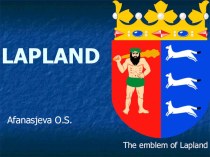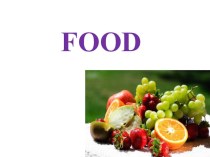- Главная
- Разное
- Бизнес и предпринимательство
- Образование
- Развлечения
- Государство
- Спорт
- Графика
- Культурология
- Еда и кулинария
- Лингвистика
- Религиоведение
- Черчение
- Физкультура
- ИЗО
- Психология
- Социология
- Английский язык
- Астрономия
- Алгебра
- Биология
- География
- Геометрия
- Детские презентации
- Информатика
- История
- Литература
- Маркетинг
- Математика
- Медицина
- Менеджмент
- Музыка
- МХК
- Немецкий язык
- ОБЖ
- Обществознание
- Окружающий мир
- Педагогика
- Русский язык
- Технология
- Физика
- Философия
- Химия
- Шаблоны, картинки для презентаций
- Экология
- Экономика
- Юриспруденция
Что такое findslide.org?
FindSlide.org - это сайт презентаций, докладов, шаблонов в формате PowerPoint.
Обратная связь
Email: Нажмите что бы посмотреть
Презентация на тему History of biotechnology
Содержание
- 2. What Is Biotechnology?Using scientific methods with organisms
- 3. Beer is an ancient foodstuffAncient beer was
- 4. Yeast cellsBoth beer and bread were developed
- 5. Cheese & yogurt also came about due to microbial contamination
- 6. Classical BiotechnologyRefinement of fermentation techniques during 18th
- 7. Herbal plants have been used since ancient
- 8. Alkaloids: Over 5,000 alkaloids have been identified
- 9. Common Medicinal Alkaloids & their Sources: Morphine Poppies Caffeine Coffee/Tea Nicotine Tabacco Emetine Ipecac Atropine Belladonna Quinine Cinchona Tree
- 10. During 19th C. quinine was critical to
- 11. Bayer discovered way to synthesize acetylsalicylic acidKnown under its trade name, Aspirin
- 12. Penicillin
- 13. Penicillium moldIn 1928 Alexander Fleming noticed something
- 14. In 1940 Norman Heatley finally showed
- 15. 1st human patient was a policeman
- 16. By D-Day the U.S. was making
- 18. Genetics - historical perspectivePractical genetics 7,000 yeas
- 19. A domesticated animal is one which has
- 20. Wolf/Dog domestication lead to: Alteration in body size Reduction
- 21. http://nemp.otago.ac.nz/read_speak/2004/read_comprehension/shrek.htmModern sheep have been bred not to lose their wool
- 22. Most domesticated species arose in SW
- 23. Desirable Characteristics for Domestication of an Animal
- 24. The switch from hunter-gatherer to farmer took
- 25. ExampleWheat is a grass spread seeds called
- 26. Hybridization played a role in the evolution of modern grains
- 27. Changes in corn size from 5000 BCE
- 28. Mutation responsible for this change has been
- 43. Later Concepts1900 - Not until 34 years
- 44. First StructureBy 1910 actual components known (nucleotides)Phoebus
- 45. So…If DNA was a single covalently bonded
- 46. T. H. Morgan’s Fruit Flies 1907-1930s
- 48. Frederick Griffith, 1928 Transformation of BacteriaTransforming factor ?
- 49. Avery, McCarty and MacLeodAfter 10 yrs of
- 50. Erwin Chargaff1949-1953Digested many DNAs and subjected products
- 52. X-ray Crystallography of DNAFranklin and Wilkins
- 53. Watson and Crick1953 propose double helix modelRight-handed double helixCollaborated at Cambridge, England.
- 54. ImpactArticle in Nature“It has not escaped our
- 55. DNA Replication
- 56. Скачать презентацию
- 57. Похожие презентации
What Is Biotechnology?Using scientific methods with organisms to produce new products or new forms of organismsAny technique that uses living organisms or substances from those organisms to make or modify a product, to improve plants or
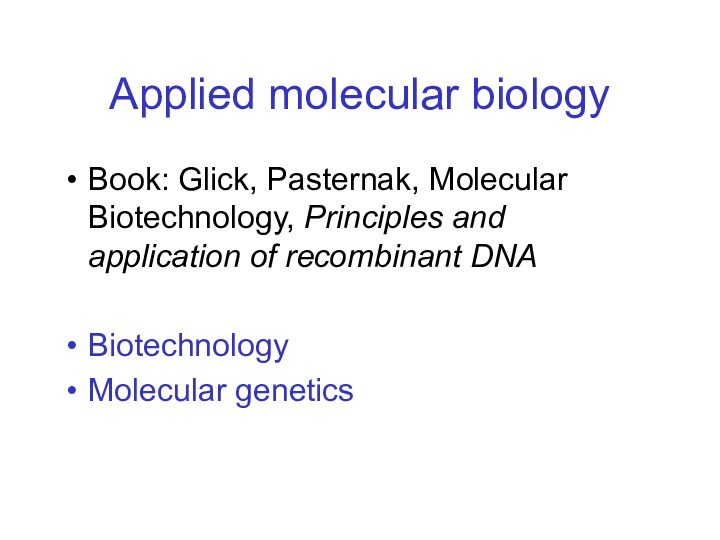
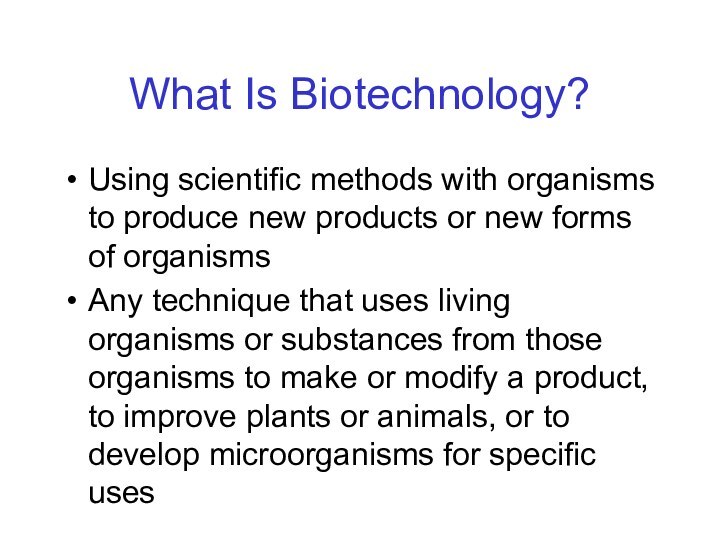
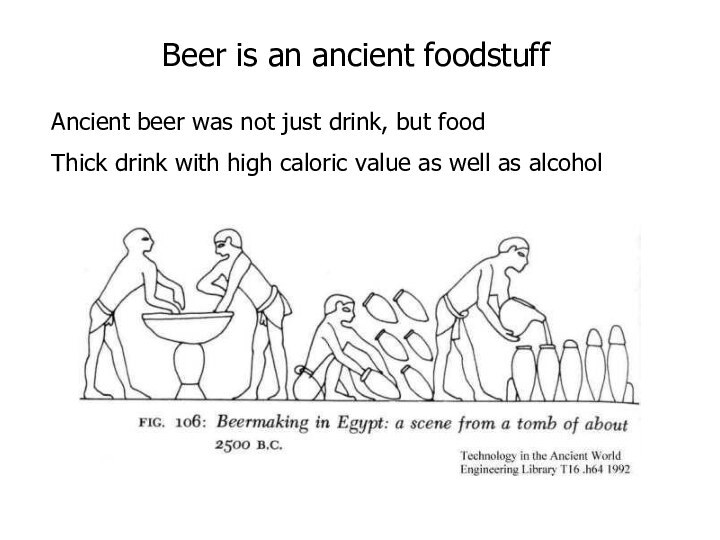
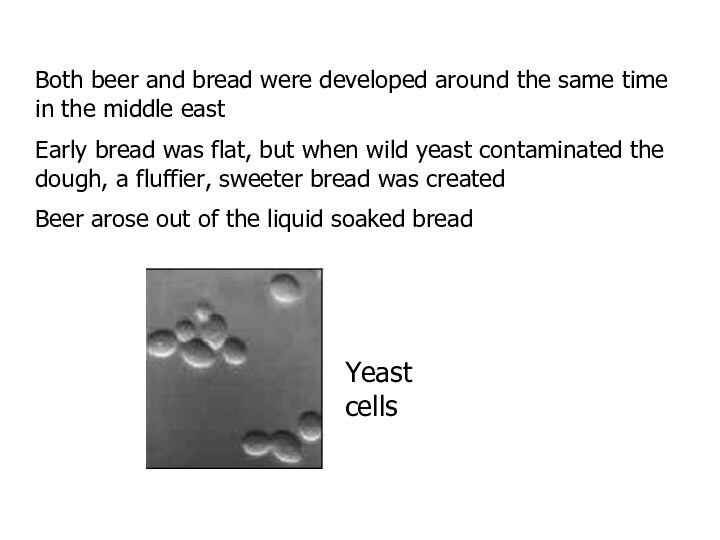
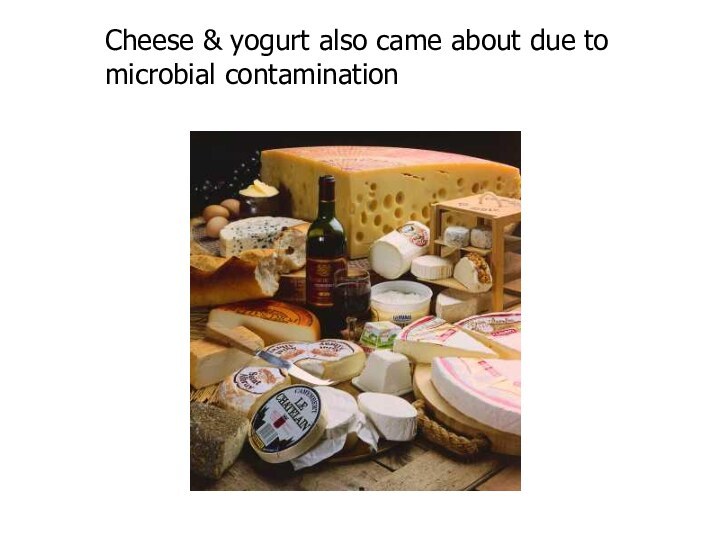
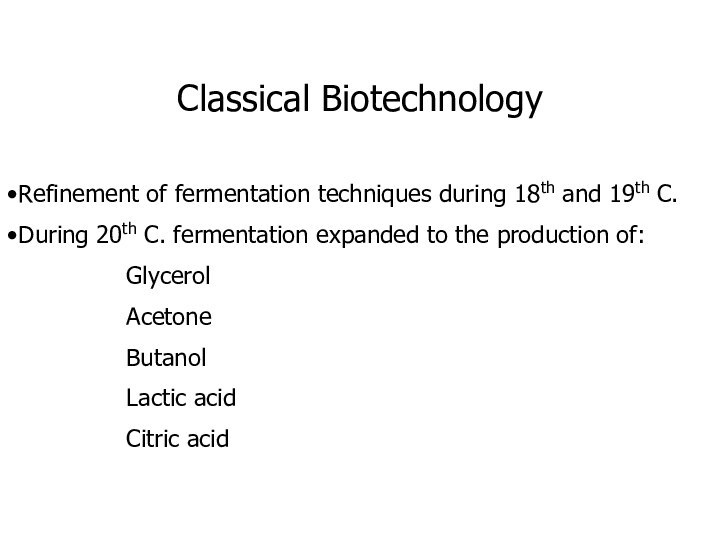
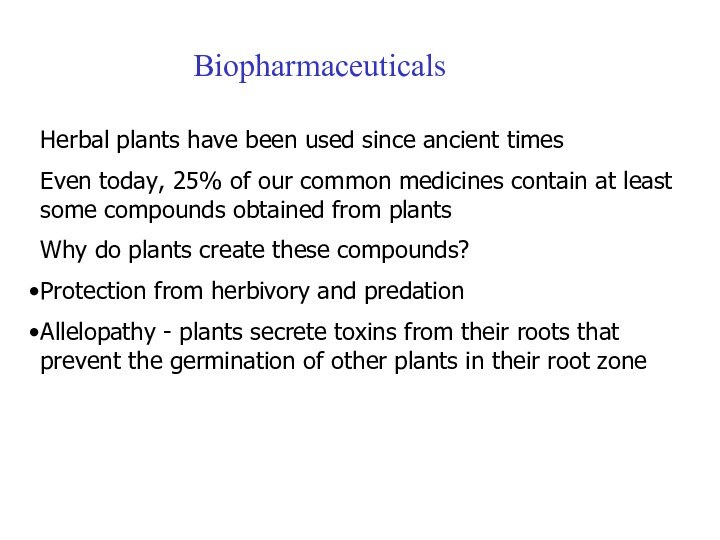

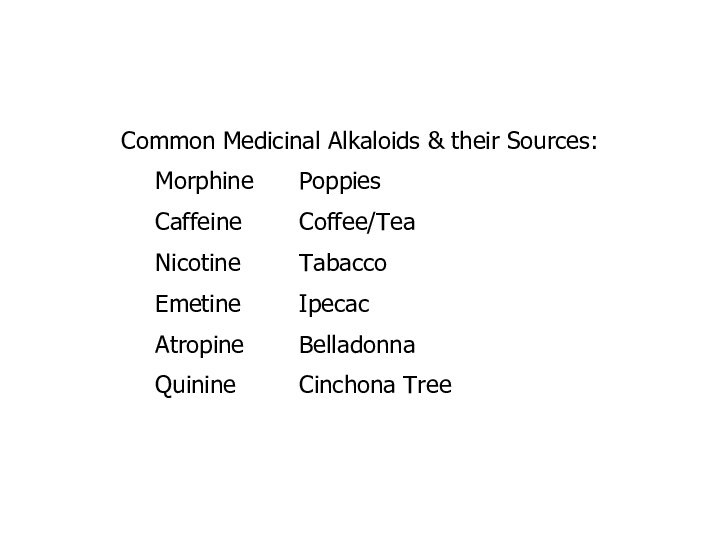
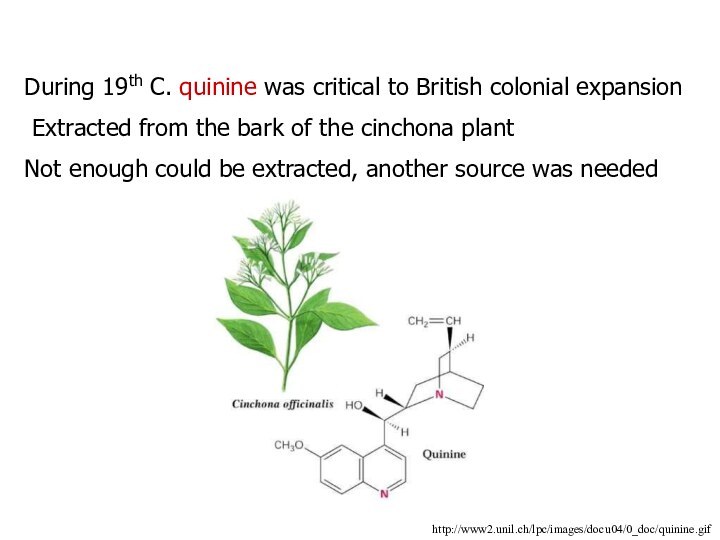
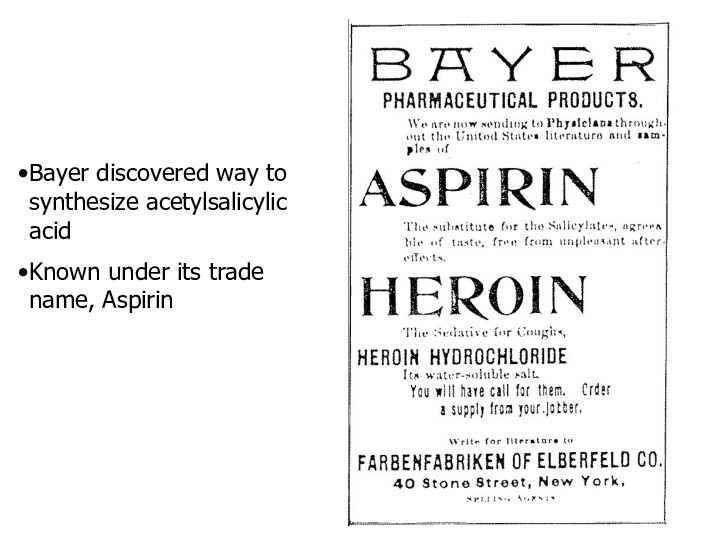

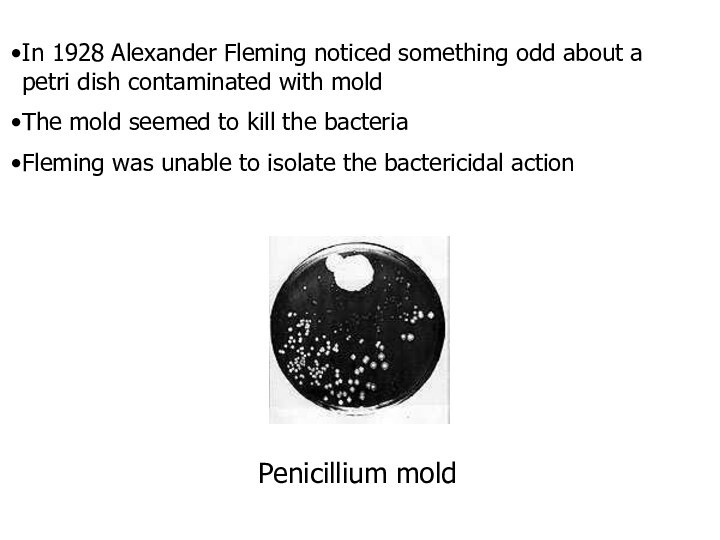
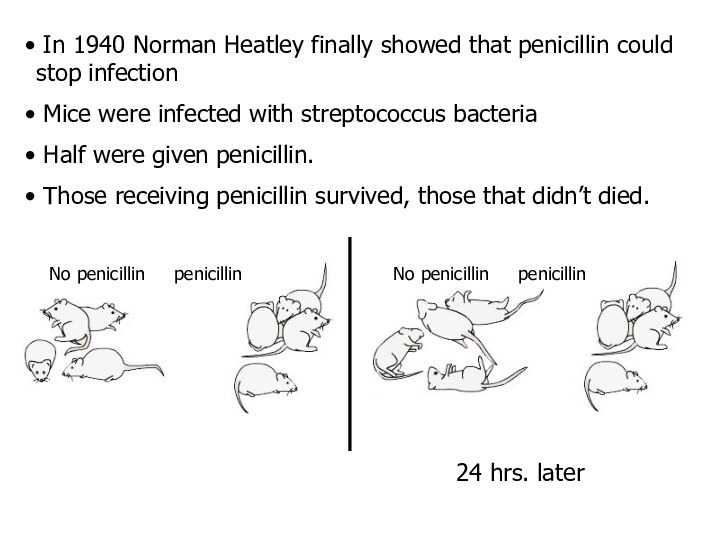
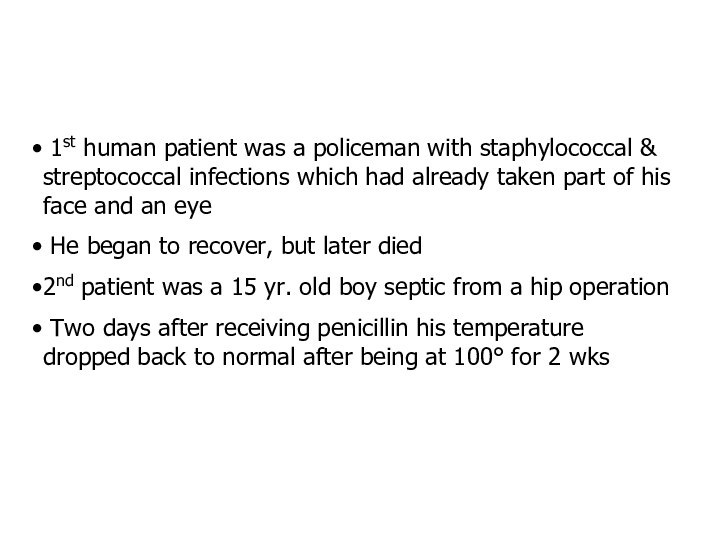
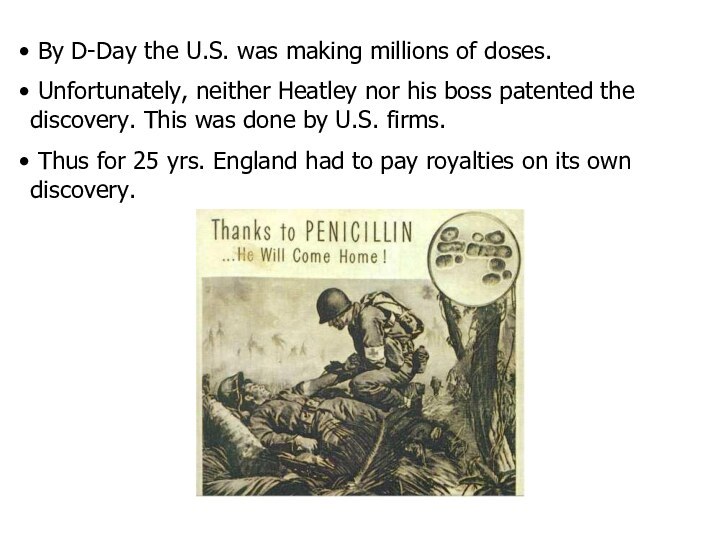

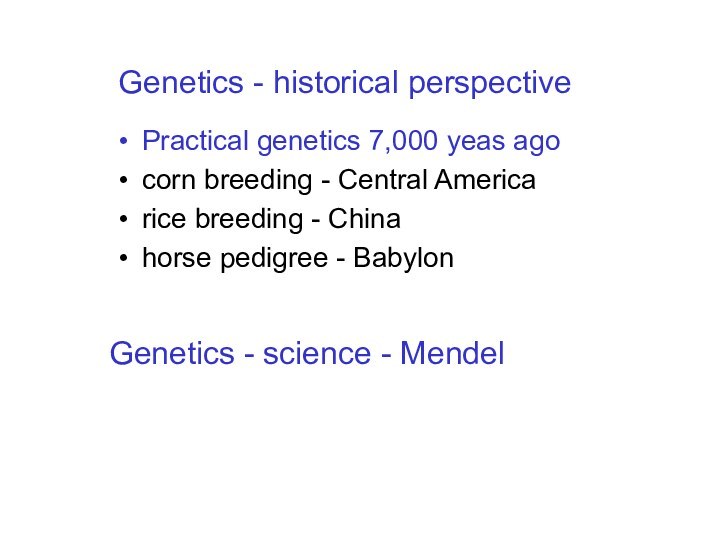
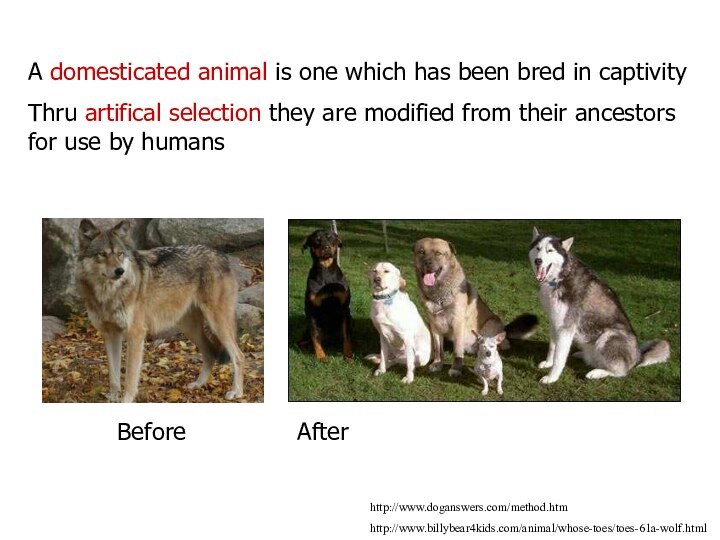
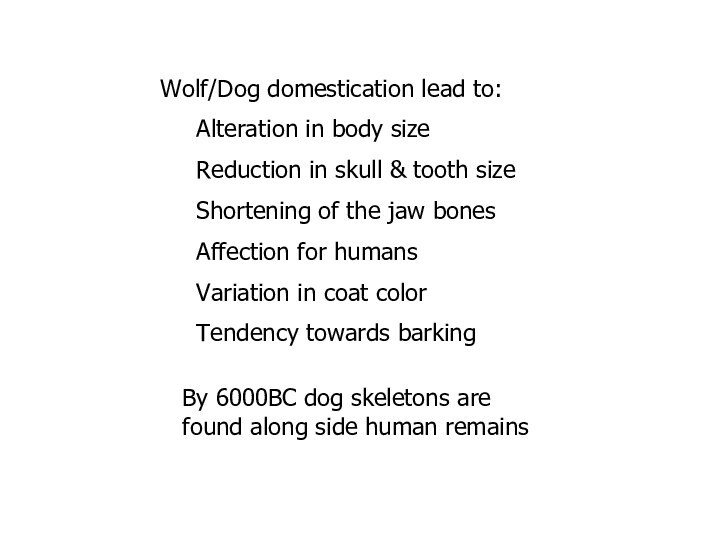
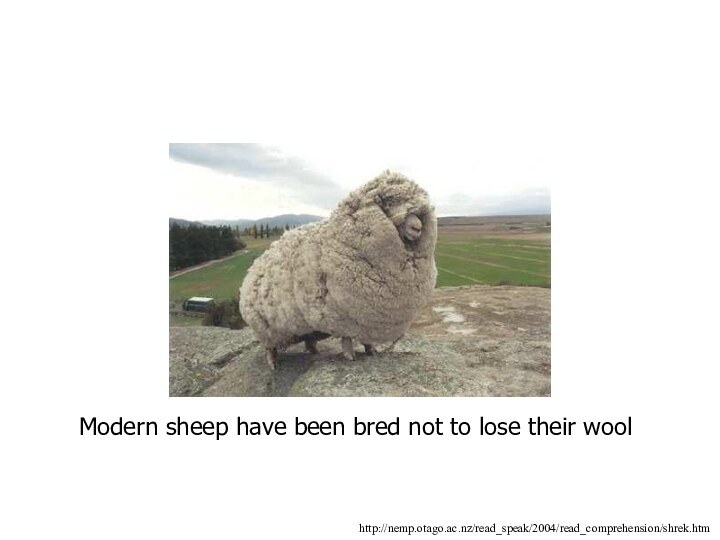
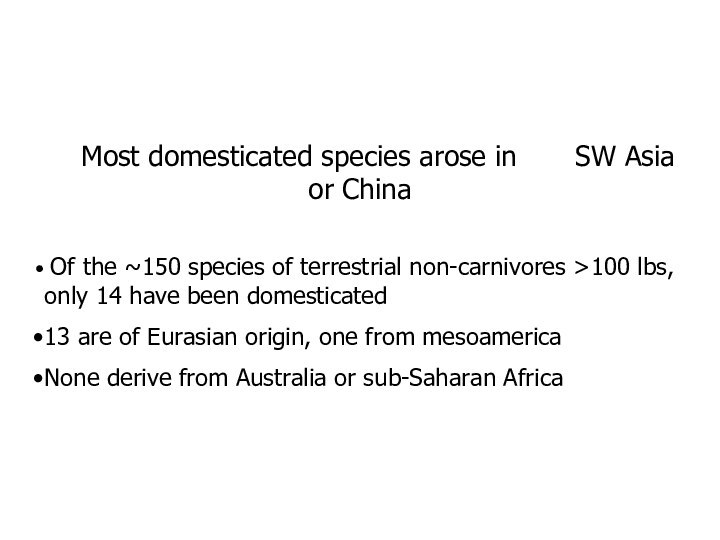

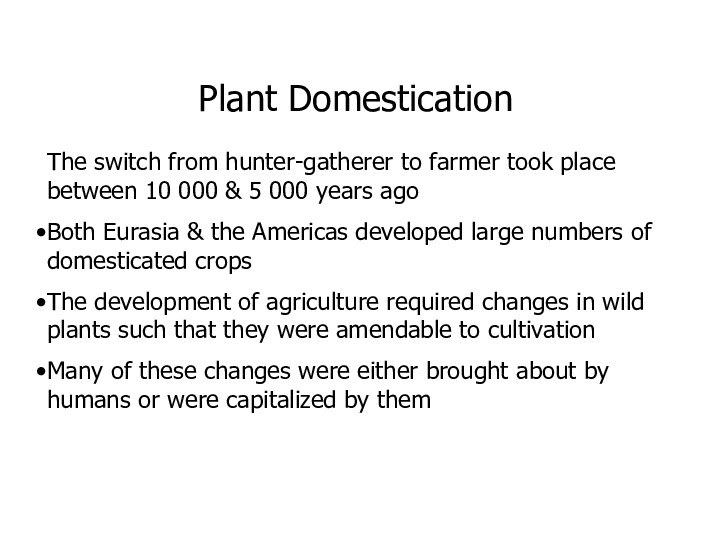
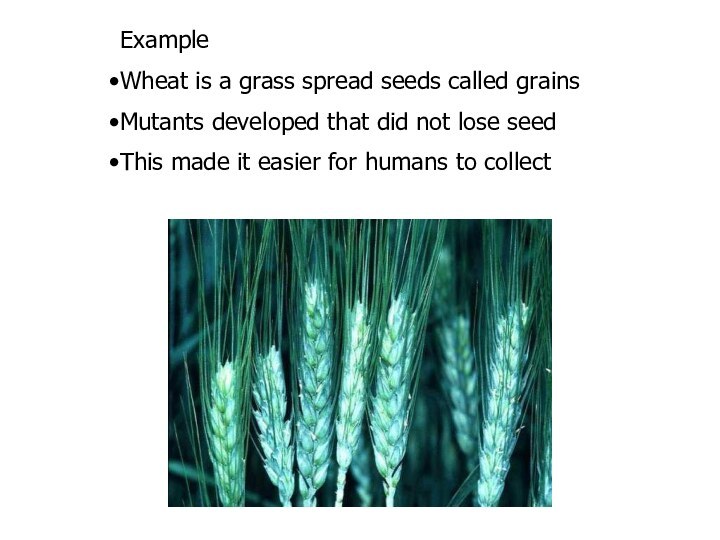
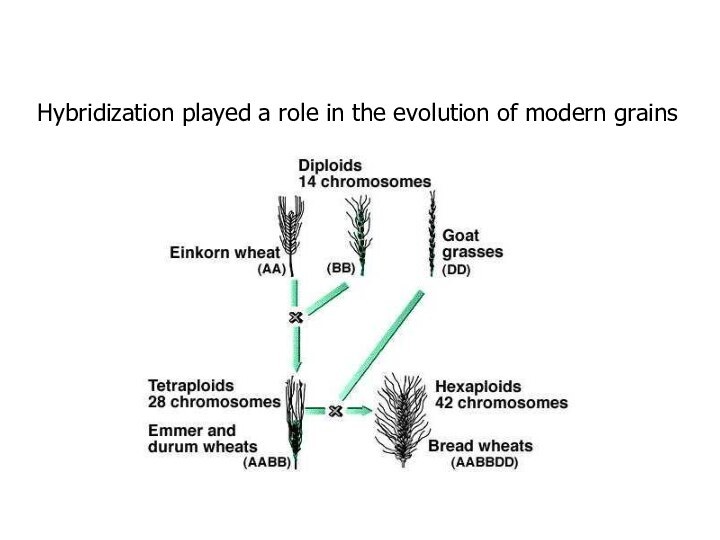
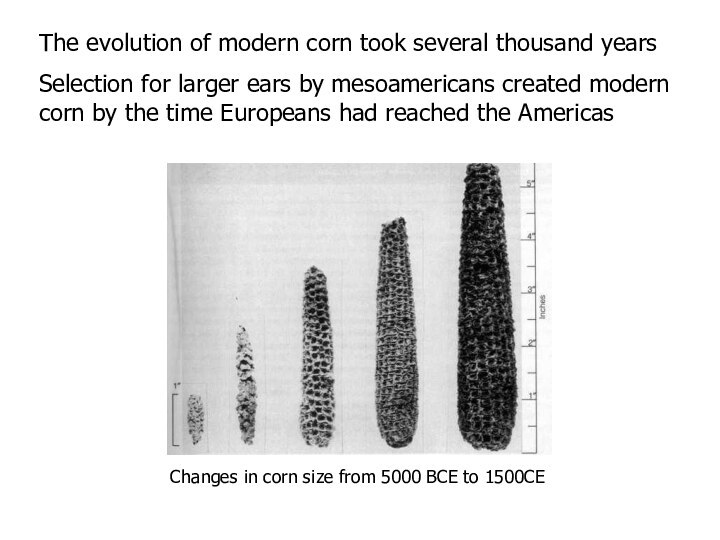


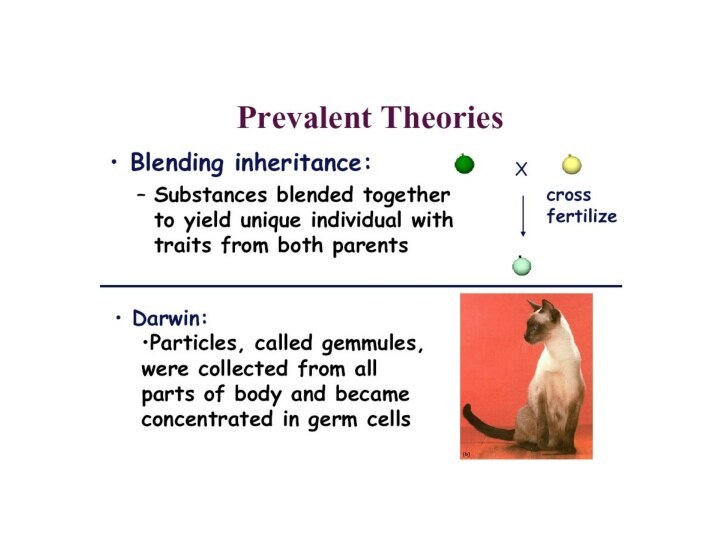
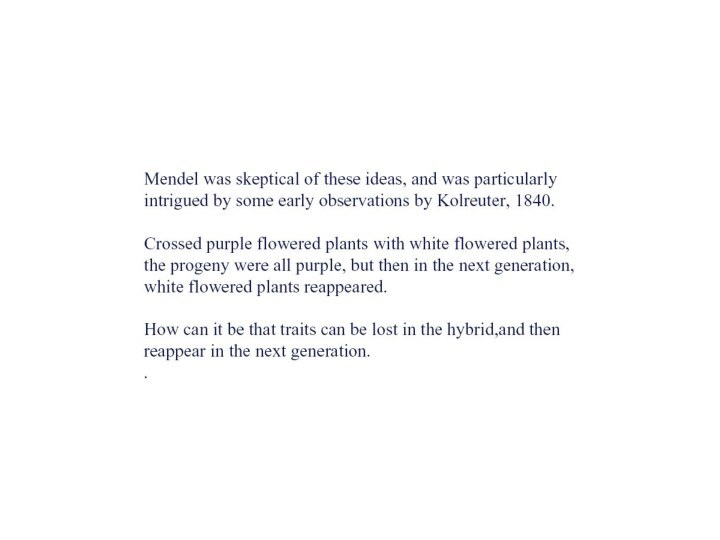
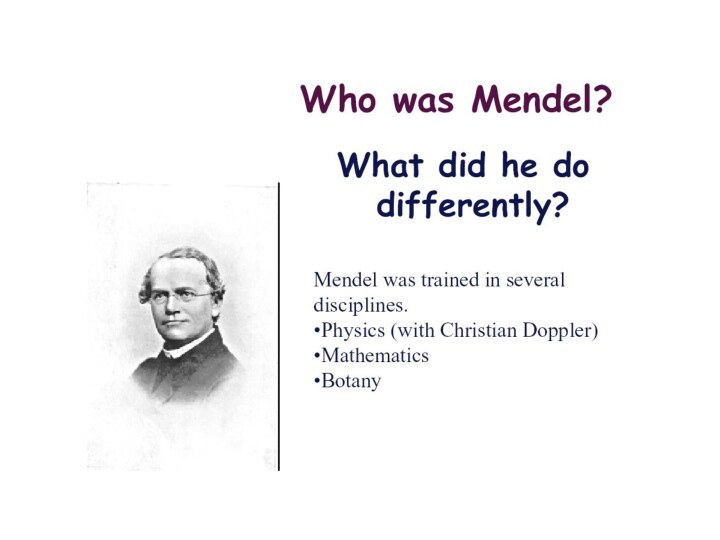
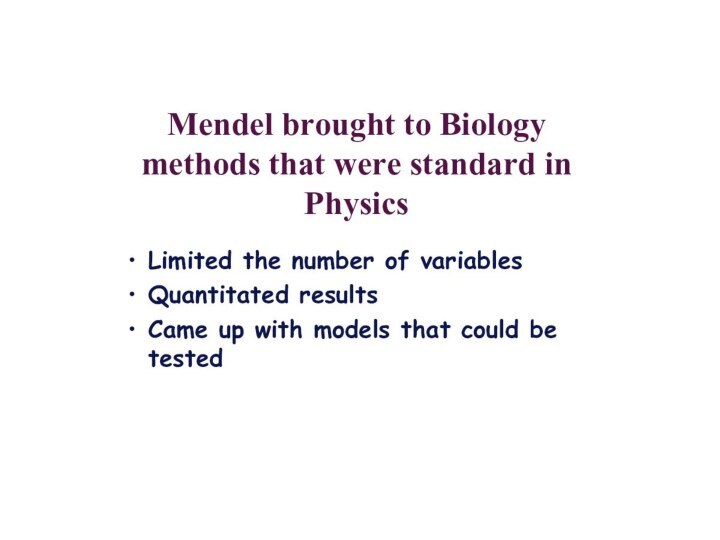
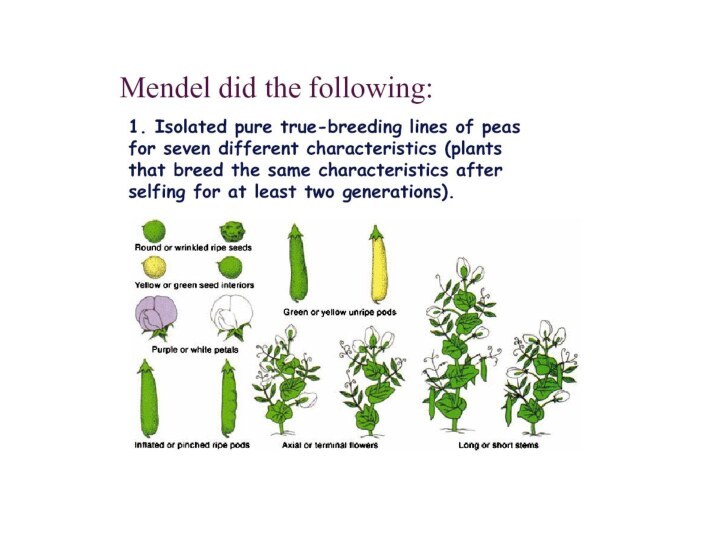
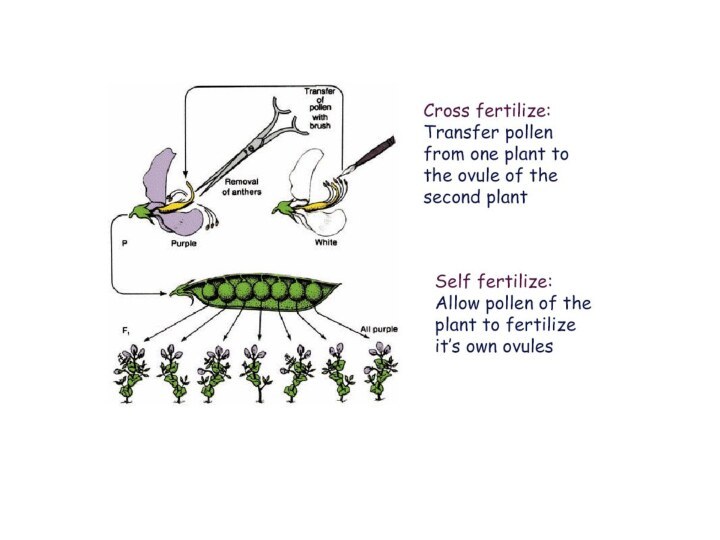


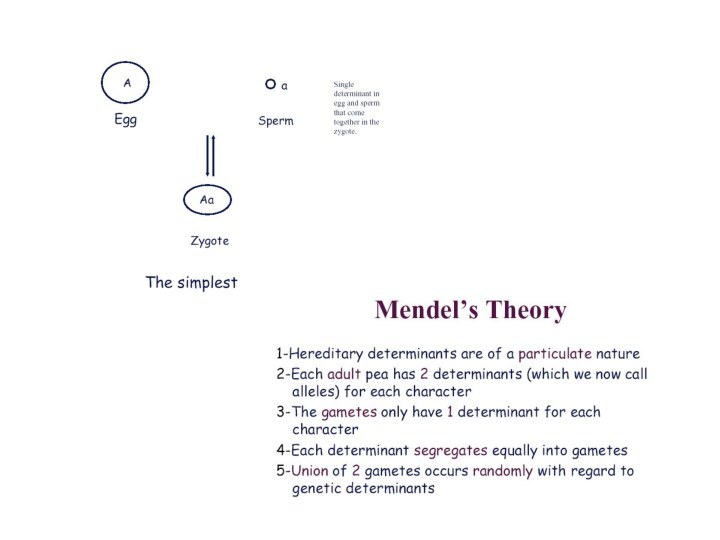
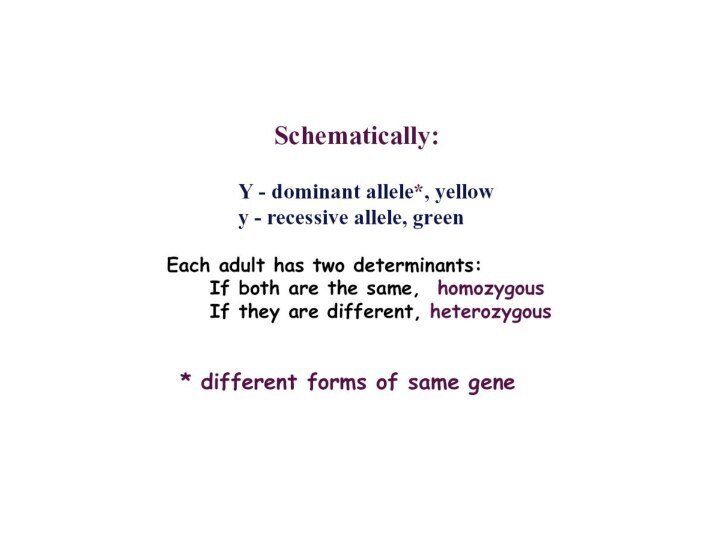
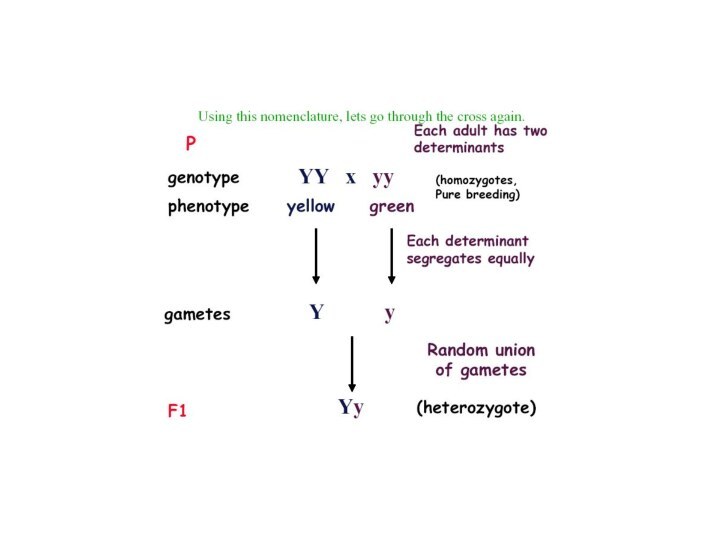
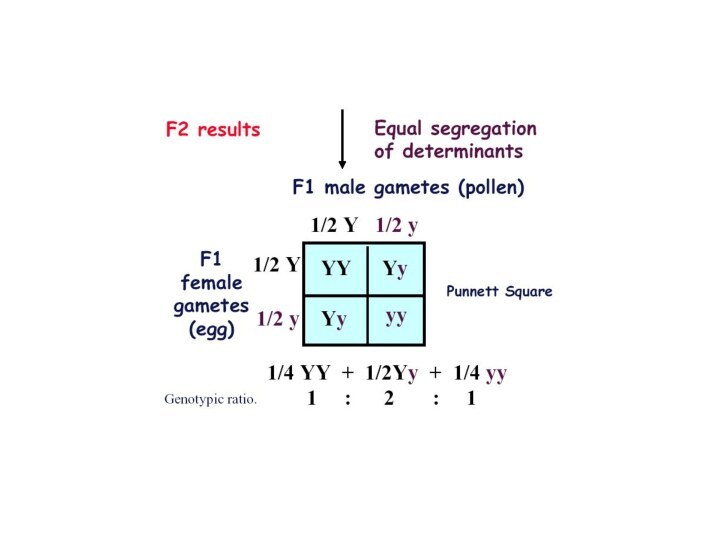
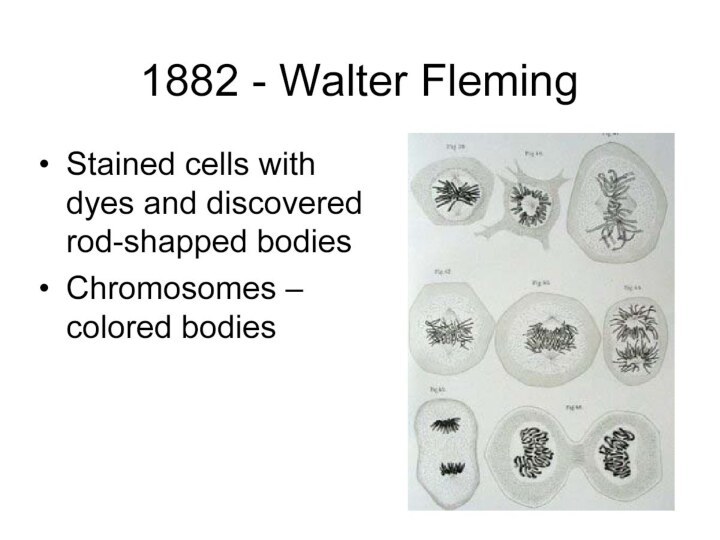
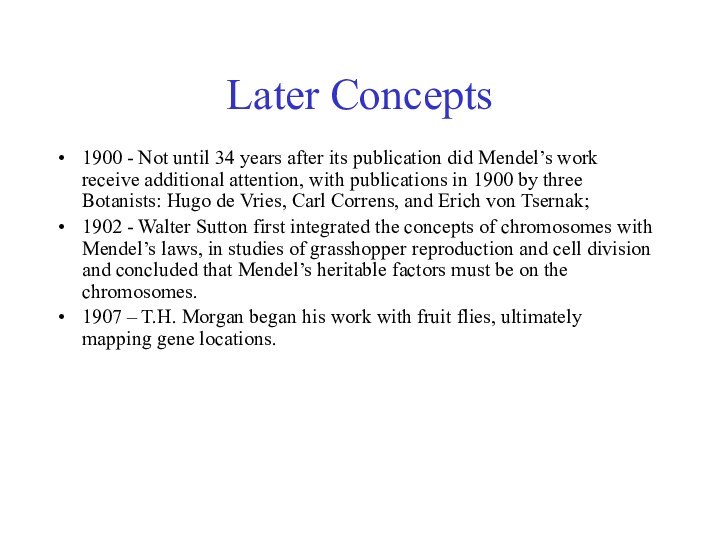
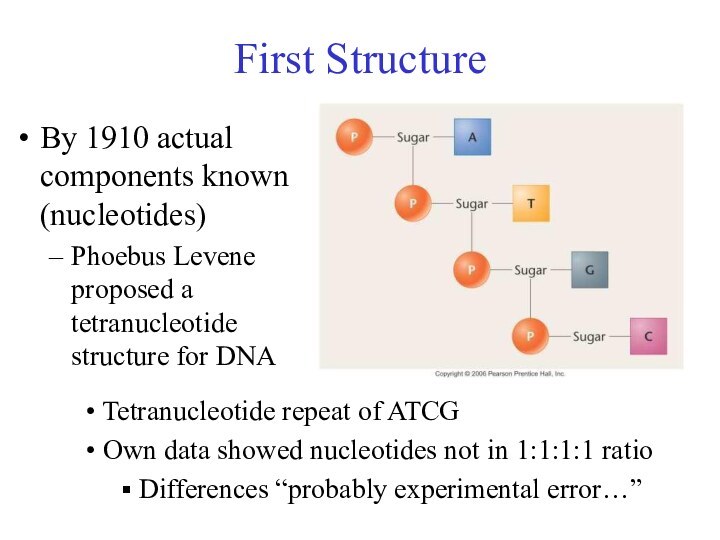
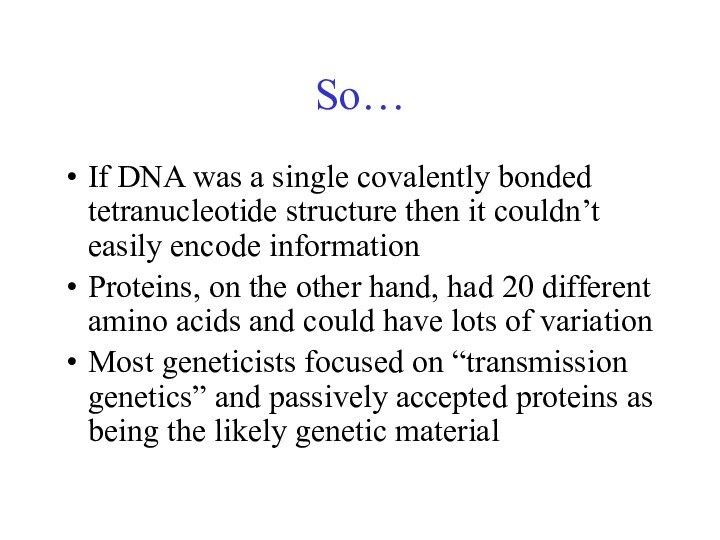
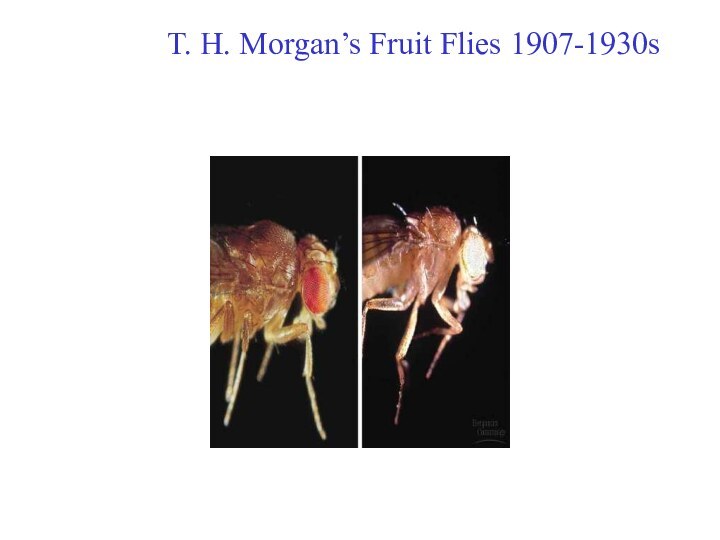
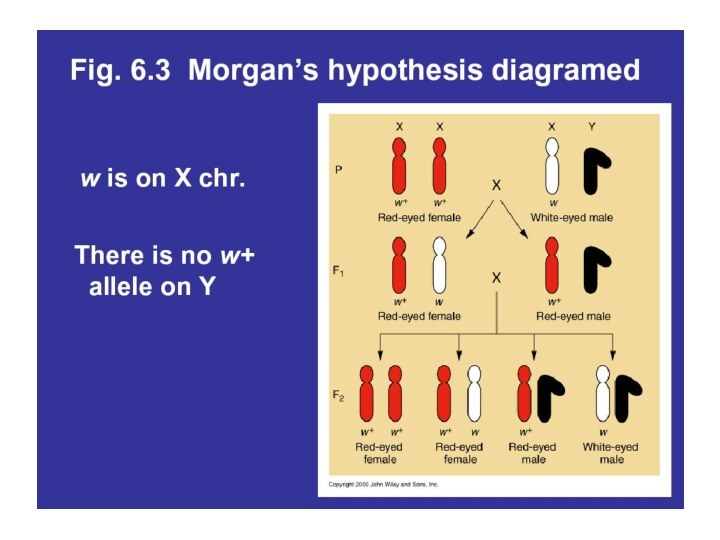
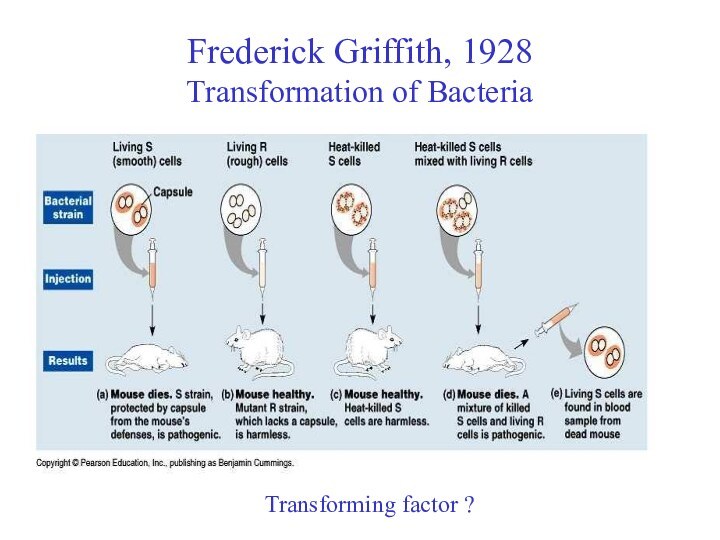
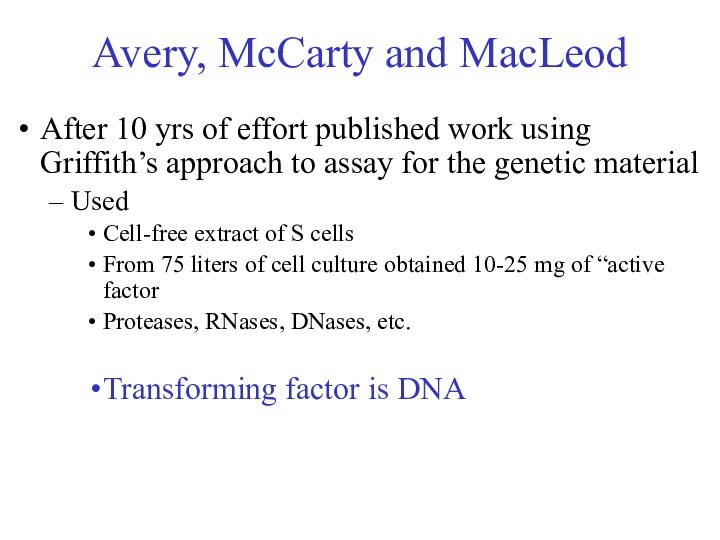
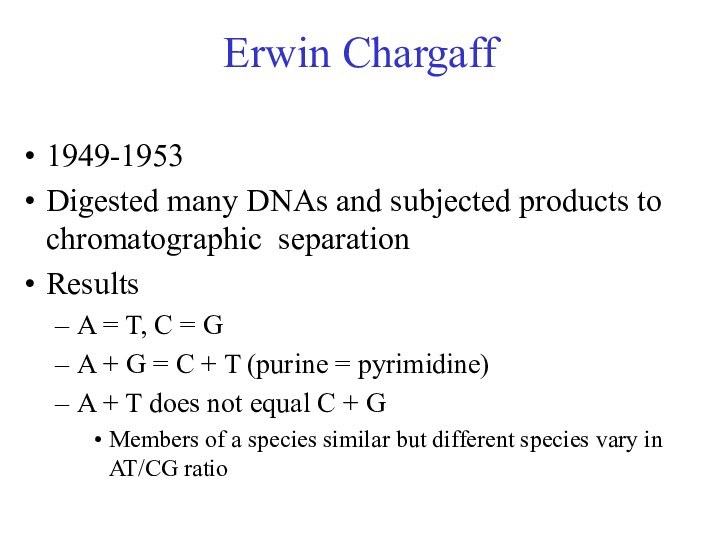
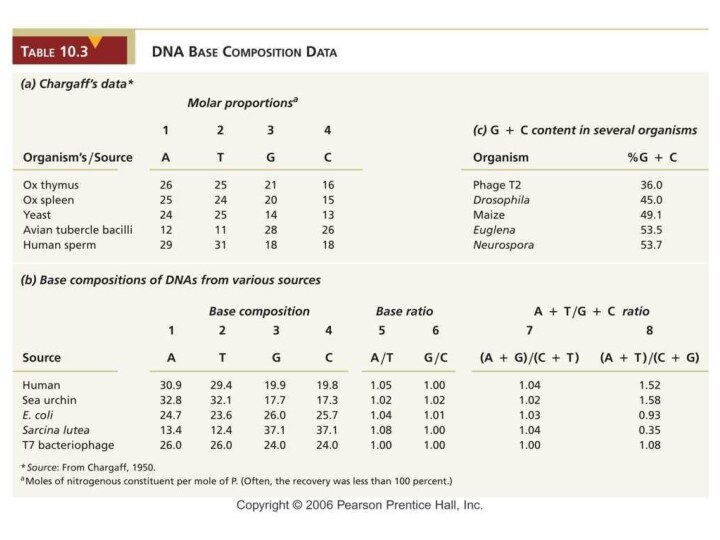
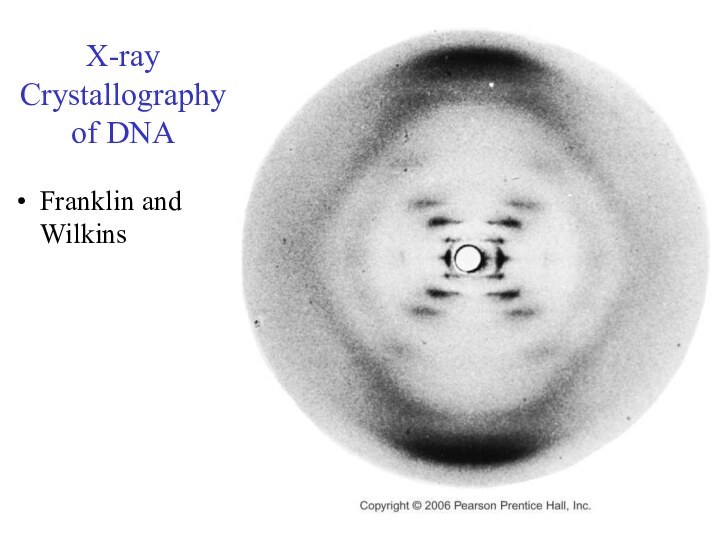

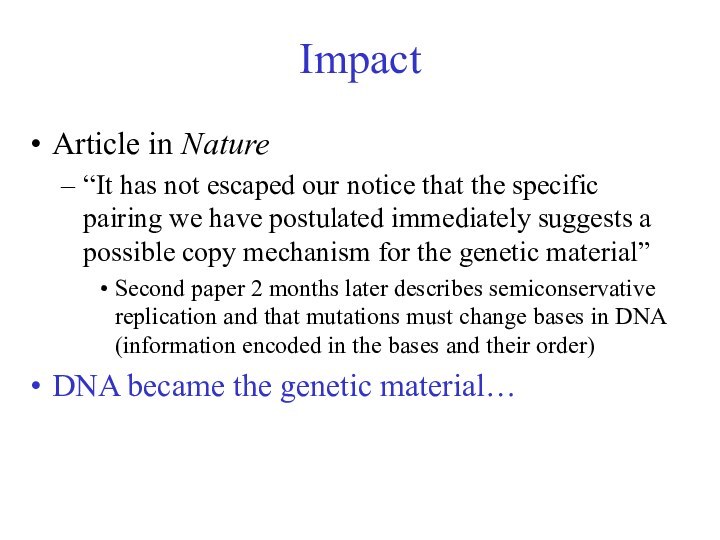
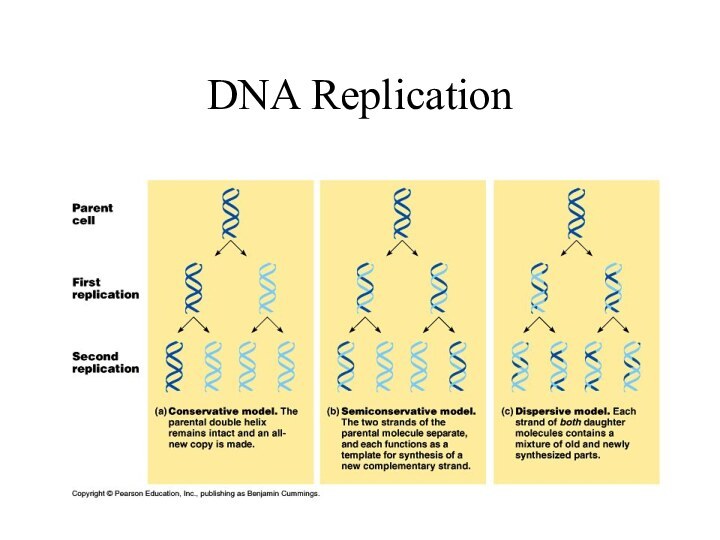

Слайд 2
What Is Biotechnology?
Using scientific methods with organisms to
produce new products or new forms of organisms
that uses living organisms or substances from those organisms to make or modify a product, to improve plants or animals, or to develop microorganisms for specific uses
Слайд 3
Beer is an ancient foodstuff
Ancient beer was not
just drink, but food
Thick drink with high caloric value
as well as alcohol
Слайд 4
Yeast cells
Both beer and bread were developed around
the same time in the middle east
Early bread was
flat, but when wild yeast contaminated the dough, a fluffier, sweeter bread was createdBeer arose out of the liquid soaked bread
Слайд 6
Classical Biotechnology
Refinement of fermentation techniques during 18th and
19th C.
During 20th C. fermentation expanded to the production
of:Glycerol
Acetone
Butanol
Lactic acid
Citric acid
Слайд 7
Herbal plants have been used since ancient times
Even
today, 25% of our common medicines contain at least
some compounds obtained from plantsWhy do plants create these compounds?
Protection from herbivory and predation
Allelopathy - plants secrete toxins from their roots that prevent the germination of other plants in their root zone
Biopharmaceuticals
Слайд 8 Alkaloids: Over 5,000 alkaloids have been identified in
numerous plant families, most in the angiosperms
Contain nitrogen
Alkaline
Bitter
Physiological effect on animals, often on nervous system
Names of most alkaloids end in "...ine"
http://www.life.umd.edu/classroom/bsci124/lec29.html
http://www.uky.edu/~dhild/biochem/26/quinoline.gif
Слайд 9
Common Medicinal Alkaloids & their Sources:
Morphine Poppies
Caffeine Coffee/Tea
Nicotine Tabacco
Emetine Ipecac
Atropine Belladonna
Quinine Cinchona Tree
Слайд 10 During 19th C. quinine was critical to British
colonial expansion
Extracted from the bark of the cinchona
plant Not enough could be extracted, another source was needed
http://www2.unil.ch/lpc/images/docu04/0_doc/quinine.gif
Слайд 13
Penicillium mold
In 1928 Alexander Fleming noticed something odd
about a petri dish contaminated with mold
The mold seemed
to kill the bacteriaFleming was unable to isolate the bactericidal action
Слайд 14 In 1940 Norman Heatley finally showed that
penicillin could stop infection
Mice were infected with streptococcus
bacteriaHalf were given penicillin.
Those receiving penicillin survived, those that didn’t died.
No penicillin penicillin
24 hrs. later
No penicillin penicillin
Слайд 15 1st human patient was a policeman with
staphylococcal & streptococcal infections which had already taken part
of his face and an eyeHe began to recover, but later died
2nd patient was a 15 yr. old boy septic from a hip operation
Two days after receiving penicillin his temperature dropped back to normal after being at 100° for 2 wks
Слайд 16 By D-Day the U.S. was making millions
of doses.
Unfortunately, neither Heatley nor his boss patented
the discovery. This was done by U.S. firms.Thus for 25 yrs. England had to pay royalties on its own discovery.
Слайд 18
Genetics - historical perspective
Practical genetics 7,000 yeas ago
corn breeding - Central America
rice breeding - China
horse pedigree
- BabylonGenetics - science - Mendel
Слайд 19 A domesticated animal is one which has been
bred in captivity
Thru artifical selection they are modified from
their ancestors for use by humansBefore After
http://www.doganswers.com/method.htm
http://www.billybear4kids.com/animal/whose-toes/toes-61a-wolf.html
Слайд 20
Wolf/Dog domestication lead to:
Alteration in body size
Reduction in
skull & tooth size
Shortening of the jaw bones
Affection for
humansVariation in coat color
Tendency towards barking
By 6000BC dog skeletons are found along side human remains
Слайд 21
http://nemp.otago.ac.nz/read_speak/2004/read_comprehension/shrek.htm
Modern sheep have been bred not to lose
their wool
Слайд 22 Most domesticated species arose in SW Asia
or China
Of the ~150 species of terrestrial non-carnivores >100
lbs, only 14 have been domesticated13 are of Eurasian origin, one from mesoamerica
None derive from Australia or sub-Saharan Africa
Слайд 23 Desirable Characteristics for Domestication of an Animal Species
Value to humans as food, draft, fiber, or hunting
Large
herbivores offer energy use advantagesRapidly reach their desired size
Must be able to breed in captivity
Good disposition & social structure
Слайд 24 The switch from hunter-gatherer to farmer took place
between 10 000 & 5 000 years ago
Both Eurasia
& the Americas developed large numbers of domesticated cropsThe development of agriculture required changes in wild plants such that they were amendable to cultivation
Many of these changes were either brought about by humans or were capitalized by them
Plant Domestication
Слайд 25
Example
Wheat is a grass spread seeds called grains
Mutants
developed that did not lose seed
This made it easier
for humans to collectСлайд 27 Changes in corn size from 5000 BCE to
1500CE
The evolution of modern corn took several thousand years
Selection
for larger ears by mesoamericans created modern corn by the time Europeans had reached the Americas
Слайд 28
Mutation responsible for this change has been identified
It
is not a change in a gene itself, rather
it is a decrease in the expression of the gene tb1
Слайд 43
Later Concepts
1900 - Not until 34 years after
its publication did Mendel’s work receive additional attention, with
publications in 1900 by three Botanists: Hugo de Vries, Carl Correns, and Erich von Tsernak;1902 - Walter Sutton first integrated the concepts of chromosomes with Mendel’s laws, in studies of grasshopper reproduction and cell division and concluded that Mendel’s heritable factors must be on the chromosomes.
1907 – T.H. Morgan began his work with fruit flies, ultimately mapping gene locations.
Слайд 44
First Structure
By 1910 actual components known (nucleotides)
Phoebus Levene
proposed a tetranucleotide structure for DNA
Tetranucleotide repeat of
ATCGOwn data showed nucleotides not in 1:1:1:1 ratio
Differences “probably experimental error…”
Слайд 45
So…
If DNA was a single covalently bonded tetranucleotide
structure then it couldn’t easily encode information
Proteins, on the
other hand, had 20 different amino acids and could have lots of variationMost geneticists focused on “transmission genetics” and passively accepted proteins as being the likely genetic material
Слайд 49
Avery, McCarty and MacLeod
After 10 yrs of effort
published work using Griffith’s approach to assay for the
genetic materialUsed
Cell-free extract of S cells
From 75 liters of cell culture obtained 10-25 mg of “active factor
Proteases, RNases, DNases, etc.
Transforming factor is DNA
Слайд 50
Erwin Chargaff
1949-1953
Digested many DNAs and subjected products to
chromatographic separation
Results
A = T, C = G
A + G
= C + T (purine = pyrimidine)A + T does not equal C + G
Members of a species similar but different species vary in AT/CG ratio
Слайд 53
Watson and Crick
1953 propose double helix model
Right-handed double
helix
Collaborated at Cambridge, England.
Слайд 54
Impact
Article in Nature
“It has not escaped our notice
that the specific pairing we have postulated immediately suggests
a possible copy mechanism for the genetic material”Second paper 2 months later describes semiconservative replication and that mutations must change bases in DNA (information encoded in the bases and their order)
DNA became the genetic material…





